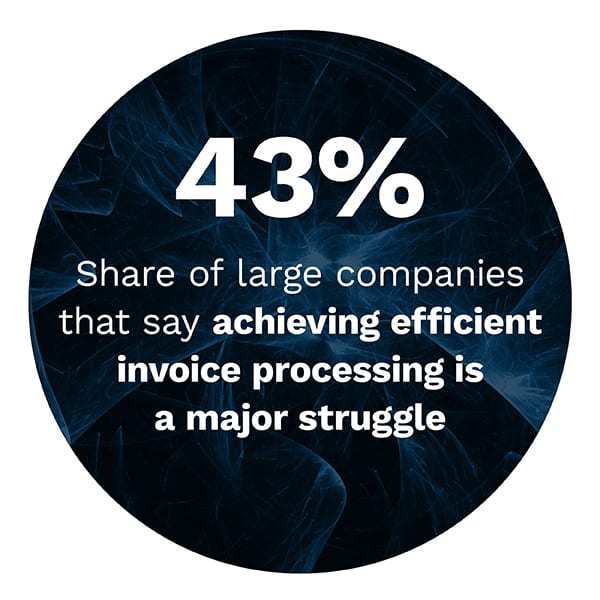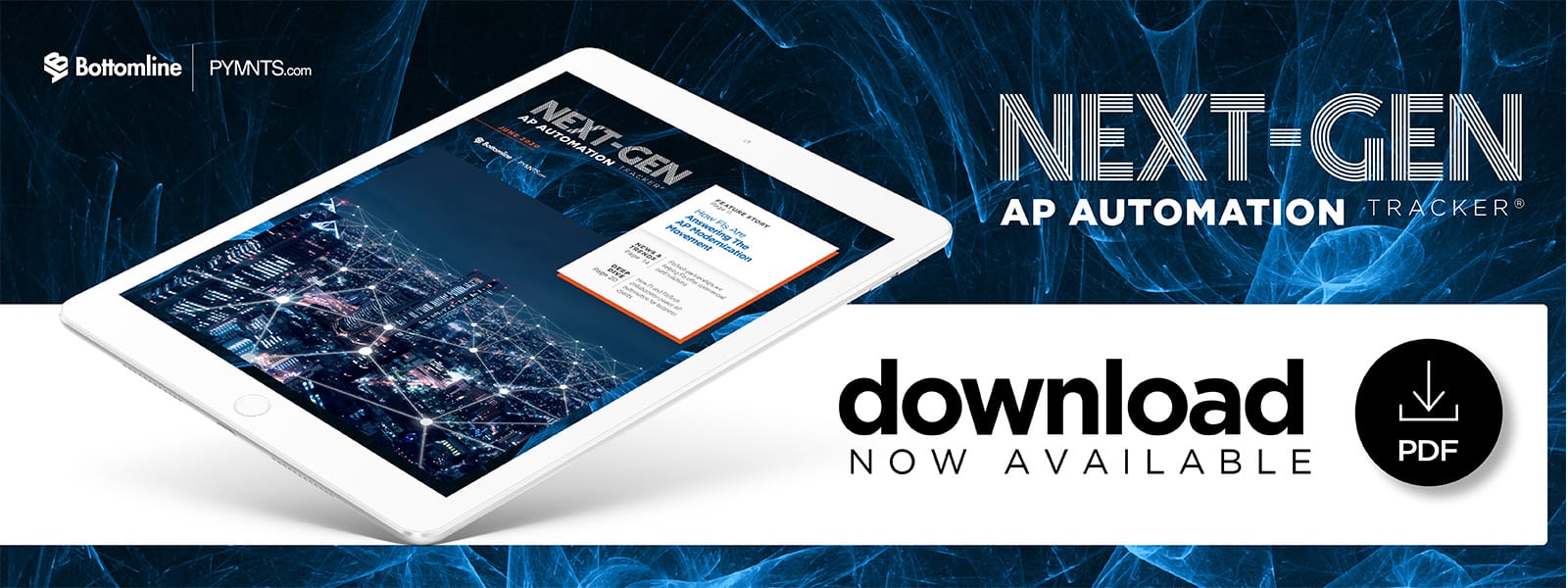Financial institutions (FIs) that meet business clients’ demands for automated AP solutions can build deeper customer relationships, but not all banks and credit unions have prepared such offerings or have the time to develop them in-house. The June Next-Gen AP Automation Tracker® examines businesses’ growing needs for AP modernizations and how FIs are partnering with FinTechs to meet them.
Around The AP Automation World 
Invoice processing can be slow and expensive for companies with inefficient AP systems. Processing a single invoice in 2019 cost companies $11.57 and took 8.6 days on average, for example, but adopting digital processes may reduce these pains.
Manual AP methods can lead to unnecessary costs and frictions. Some companies are set up to pay vendors solely via paper checks, for example, which can be more expensive than other methods. Businesses that cannot process digital data meanwhile must have staff handle paper invoice documents, which can be time-consuming and introduce errors.
Companies are starting to realize old-school methods’ limitations, however. A 2019 survey found that 54 percent of large companies and 65 percent of smaller ones reported that “manual payment generation workflows [that] are error-prone and time consuming” represented a top B2B payment challenge for their treasury departments. These insights indicate that many businesses are eager for change.
For more on these stories and other AP Automation headlines, download the Tracker.
How FIs Are Answering The AP Modernization Movement
 Employers must enable their staff to operate remotely during the pandemic, and this has driven many companies to look beyond paper-based, office-dependent processes to adopt digital tools that allow them to view invoices and make payments remotely. Modernization’s benefits are not just limited to helping businesses keep up with payment obligations during the crisis: They can also help companies unlock long-term efficiencies, said Brad Garfield, head of product for commercial cards and comprehensive payables in global transaction services at Bank of America. In this month’s Feature Story, Garfield explained how modernizing AP departments can save businesses money and why FIs are partnering with FinTechs to offer clients reliable solutions.
Employers must enable their staff to operate remotely during the pandemic, and this has driven many companies to look beyond paper-based, office-dependent processes to adopt digital tools that allow them to view invoices and make payments remotely. Modernization’s benefits are not just limited to helping businesses keep up with payment obligations during the crisis: They can also help companies unlock long-term efficiencies, said Brad Garfield, head of product for commercial cards and comprehensive payables in global transaction services at Bank of America. In this month’s Feature Story, Garfield explained how modernizing AP departments can save businesses money and why FIs are partnering with FinTechs to offer clients reliable solutions.
Find the full story in the Tracker.
Deep Dive: Why FIs Are Partnering With FinTechs To Ease Business Clients’ AP Burdens
Automated AP tools can help companies streamline payment processes and catch or prevent mistakes, and businesses are therefore interested in exploring such solutions. Many would like to turn to trusted banking partners for assistance, but not all FIs are ready to provide AP solutions, and clients may be unable to wait for them to develop new ones. Some FIs are solving these frictions by partnering with FinTechs, which allows let them quickly make these products available. This month’s Deep Dive explores different types of FI-FinTech collaborations to provide AP solutions and why FIs choose each one.
Download the Tracker to read the Deep Dive.
About The Tracker
The Next-Gen AP Automation Tracker®, a PYMNTS and Bottomline Technologies collaboration, is a monthly report that highlights the most recent accounts payable developments and automated solutions disrupting how businesses process invoices, track spending and earn rebates on transactions.

 Businesses that have stuck with paper-based accounts payable (AP) processes are feeling the heat as the COVID-19 pandemic makes it unsafe for staff to conduct manual invoice and payment processing from their offices. Companies are looking for digital tools to help them maintain their operations during the disruption and find new, long-term efficiencies. These solutions can include artificial intelligence (AI)-powered offerings that catch subtle invoicing errors, for example, or machine learning (ML) technologies that automatically code invoices according to companies’ internal procedures.
Businesses that have stuck with paper-based accounts payable (AP) processes are feeling the heat as the COVID-19 pandemic makes it unsafe for staff to conduct manual invoice and payment processing from their offices. Companies are looking for digital tools to help them maintain their operations during the disruption and find new, long-term efficiencies. These solutions can include artificial intelligence (AI)-powered offerings that catch subtle invoicing errors, for example, or machine learning (ML) technologies that automatically code invoices according to companies’ internal procedures.





